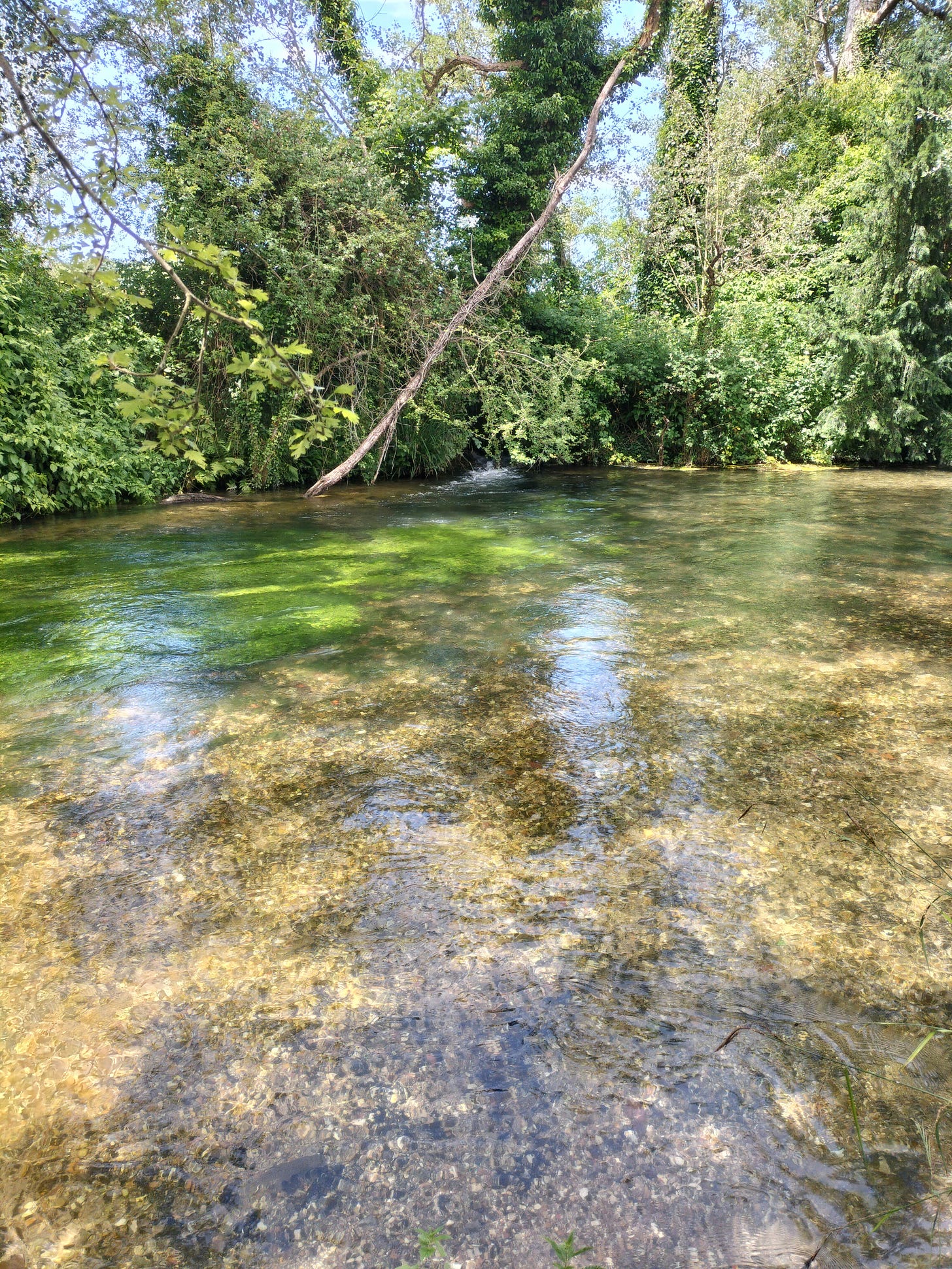It is a rather wonderful thing to visit somewhere you go regularly, that is a part of your sense of home, but to see it though a different lens and to experience it in a different way. This was one of the reasons that I booked myself on a writing workshop lead by story teller Dawn Nelson as part of the Hampshire and Isle of Wight Wildlife Trust’s Tales from the Riverbank Literary Festival. The thought of spending an afternoon walking one of my favourite strolls, whilst learning new techniques and stories, was irresistible, and I signed up as soon as I saw it advertised. Knowing that my own writing needed a serious kick into action was another spur.
The Arle is one of our precious chalk streams - achingly rare and even more beautiful. Rare of course, unless you are in Hampshire. The Itchen, the Arle and the Meon all run within ten miles of home, and the Test - famed equally for the quality and cost of its fly fishing, isn’t much further away. They all share an incredible quality of stillness, despite the flow of the water. I think it is their extraordinary clarity that causes this. They are almost sculptural; the clearness of the water and its movement over weeds and grasses and around obstacles, suggesting cooled poured glass, rather than a more prosaic river.
The Arle is the shortest of the four rivers, but is still a watery maze of tributaries and ponds; even small lakes. The route the workshop took is a favourite Alresford stroll, the town’s version of a promenade. To get to the river, we walked down Broad Street, which is as wide as might be expected, and at this time of year, its tall, pastel-painted Georgian houses are the summer quarters of hundreds of swifts, who shriek and swoop around the eaves. When the road bent round to the right, we took the lane to the left, and then, followed by trickly, gravelly streams, we headed down to the riverside walk. We passed Ladywell House, and the lane we walked down is called Ladywell Lane. I wonder if there was once a sacred well here. The village church is named for St John the Baptist - appropriate for such a watery place.
Down to the river proper - it was a hot day; up in the town, the dry flint and stone and clipped grass of the churchyard had a dusty, strained, tired feel, but down by the water, there was a luscious coolness, and that indescribable, but unmistakable scent of water. I learned as we walked; new folk tales and new facts. I know now that the river rises at Bishop Sutton, just a few miles away, and that when it rises, up through the Hampshire chalk it is 11 degrees, and that cold water holds more oxygen than warm, and what river crowfoot and starwort look like, and the tales of wise women and wily eels.
It is a rich day for trout, and one in particular held my attention; caught in the spotlight sunbeams that every-so-often came through gaps in the tree canopy overheard. It seemed perfectly still, facing against the flow of the river, save for a shivering ripple. Lazily, he swallowed some floating morsel that came into his path, and held his position, until a splashing spaniel startled him, and that shivering ripple turned into a great flick, and he was off to find a better spot.
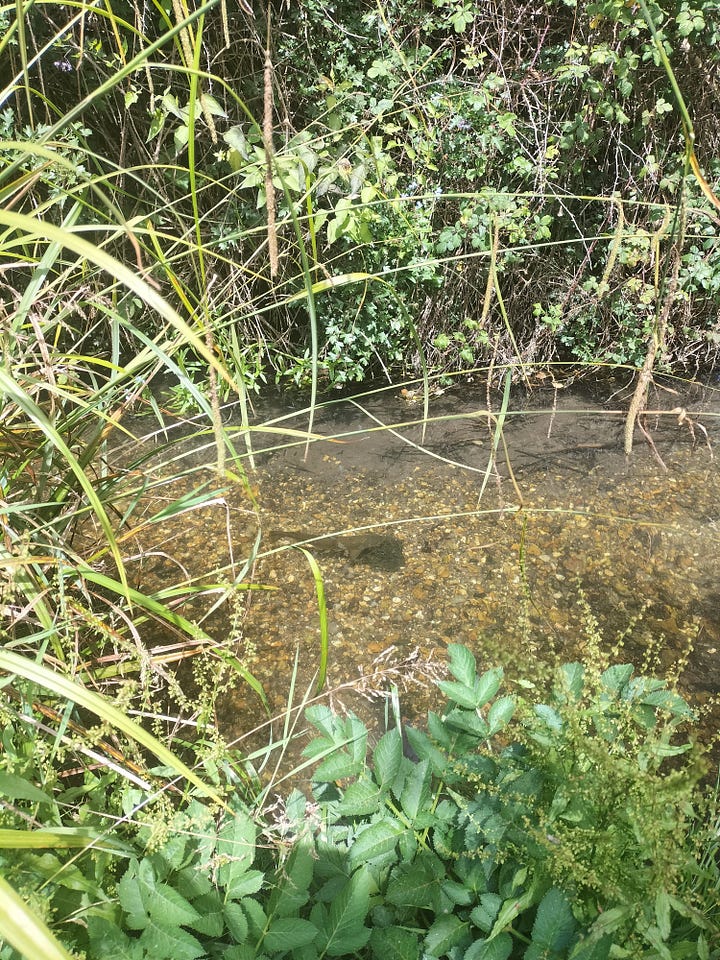
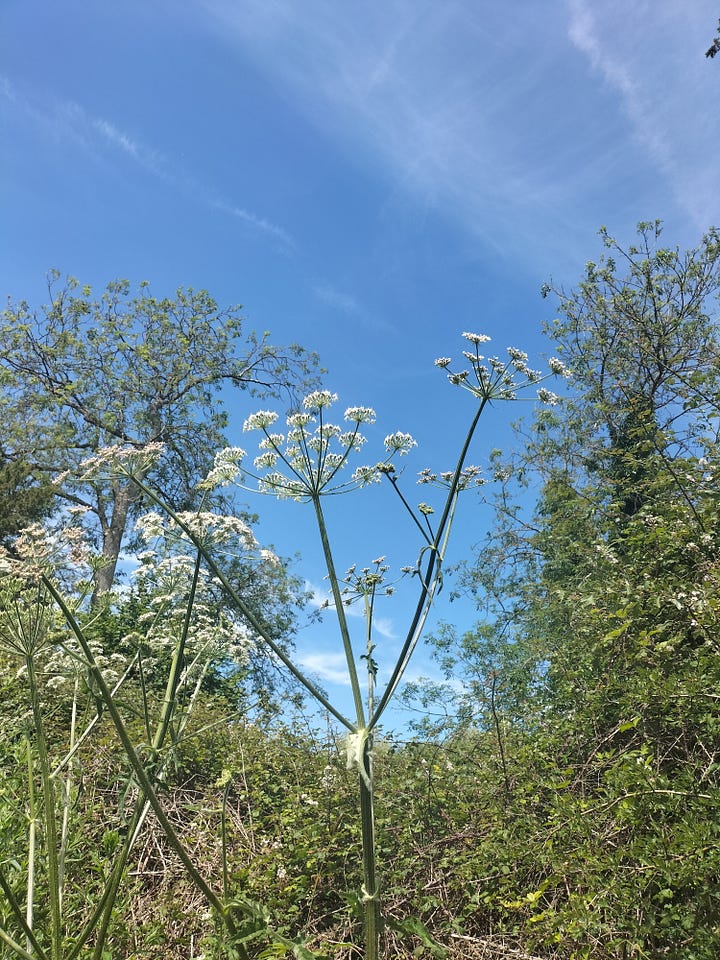
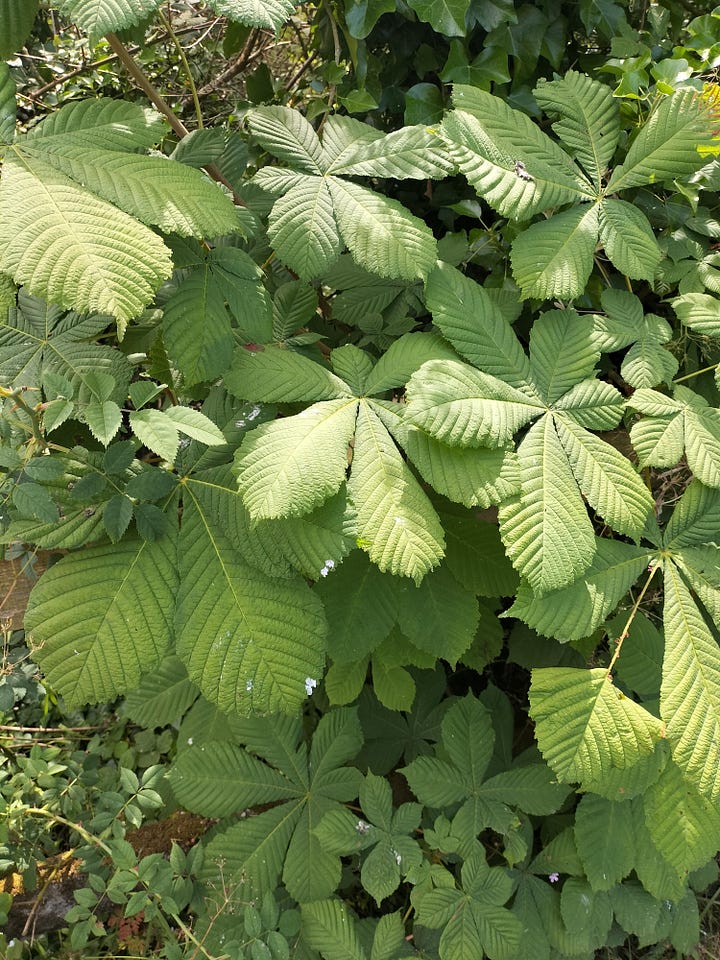
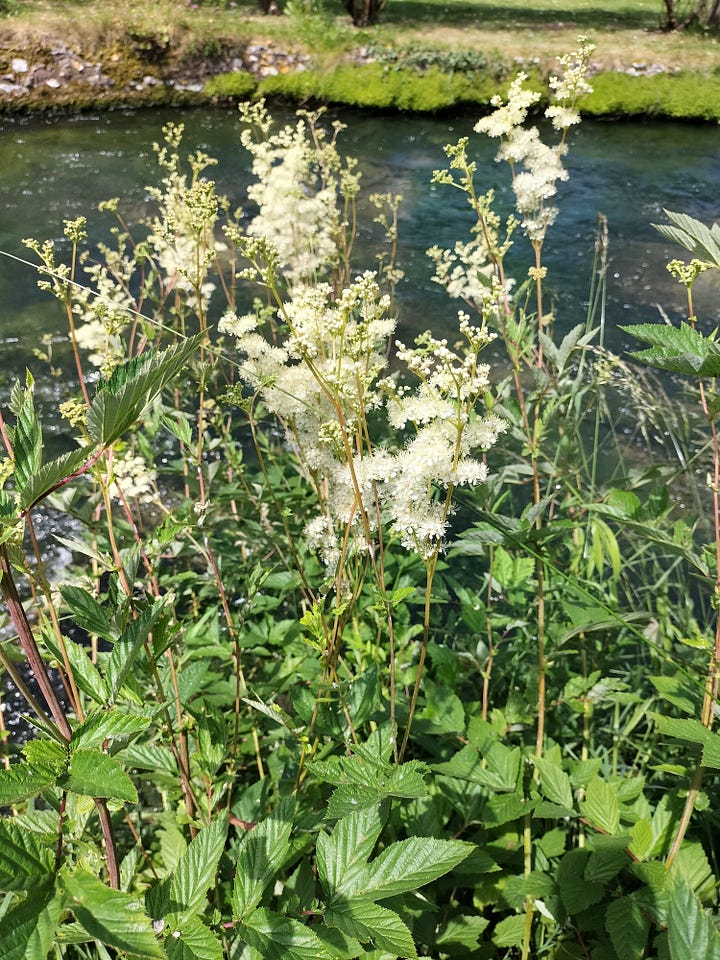
Walking onwards, I was struck by the way that everything within that space existed within two different planes, and ran at different angles. On the horizontal was the river - flat and level and dynamic. And edgy relentlessness that took it towards first its sister river the Itchen, and then on to the Solent. We too moved on this horizontal plane, a procession of stick figures strolling along the banks, a stream in its own right, albeit running in both directions.
Everything green on the other hand seemed to be driving upwards, a great boundless thrust towards the sky. Thistles and hogweed and a hundred more things I couldn’t name, towered above the path, while bindweed and cleavers and brambles rampaged over and twined themselves around their neighbours in their own drive upwards.
Against the horizontal flow and the upward thrust, ran the random anarchy of the insect life, especially the vivid blue of needle-thin dragonflies and the more flamboyant demoisellles. The broke through from the onwards and upwards, dancing with love and danger (several came dangerously close to becoming lunch for a hungry trout) in the sunlight.
On our return journey, we passed children feeding the ducks and families out for a walk. A man was sitting alone on the gravel walk, staring into the water, his legs tucked up underneath him as though meditating. He made me thing back to the Ladywell at the start of the walk, and of the liminality of this landscape (that word again!). The river is very definitely a boundary here - the town on one side, and fields and woodland on the other. Was this one of those rivers into which warriors once deposited their swords long ago? The clarity of the water, if they did, must have made for quite an impressive sight. I imagine a great overlapping of metal, glinting against the gravel of the river bed. Still an oppositional force, even in their watery afterlife: like everything that enters the river, that heap of swords would have changed the water’s flowed, slowed it, in just that spot. Perhaps they are still there, if they ever were, under sandbank, or one of the miniature forests of river weed.
No swords were laid in the water on our workshop walk, but plenty of food was through to the ducks - and to the trout who were rather speedier in snapping it up. Avid eyes, young and old watched the ducks as they flustered and bustled and surged across the water - another form of worship perhaps?




